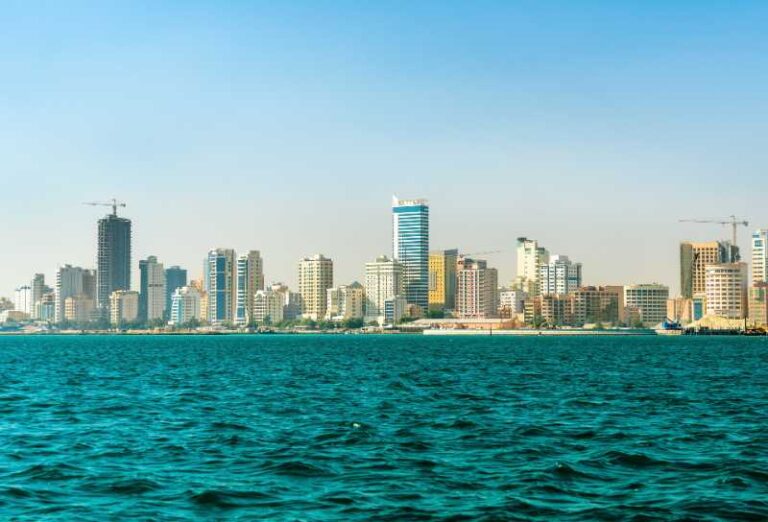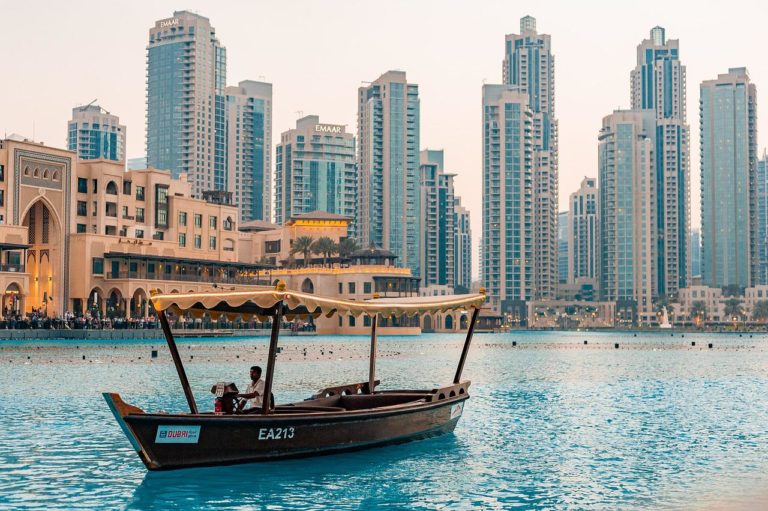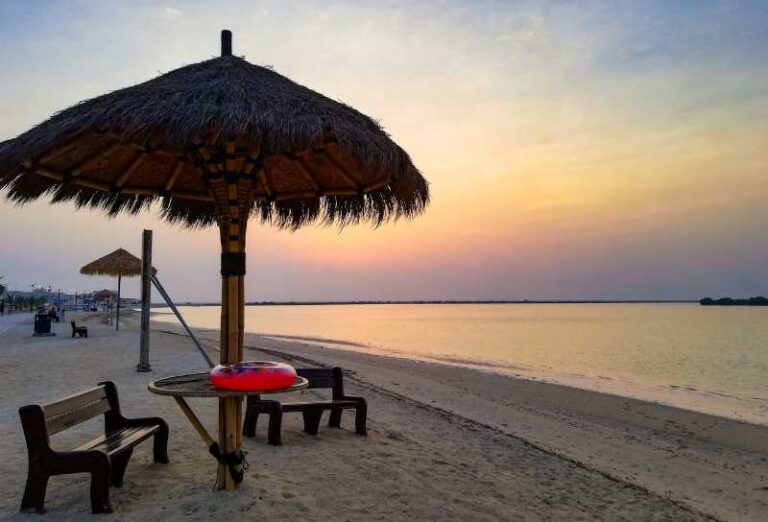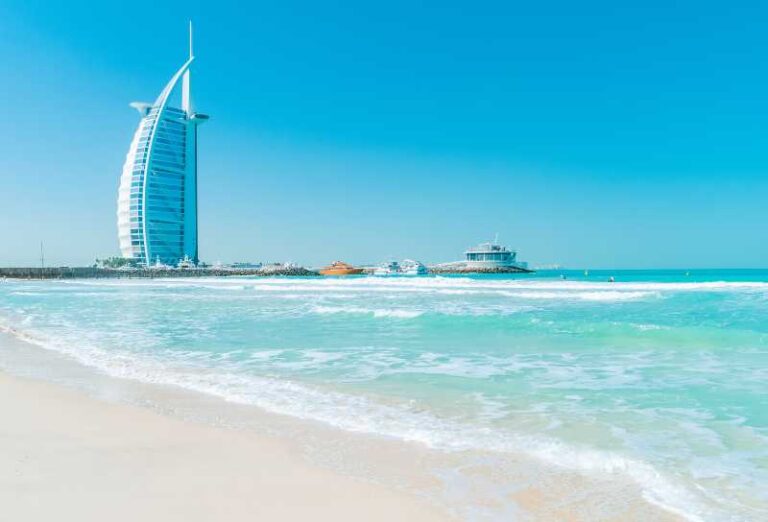Top Souvenirs from Morocco
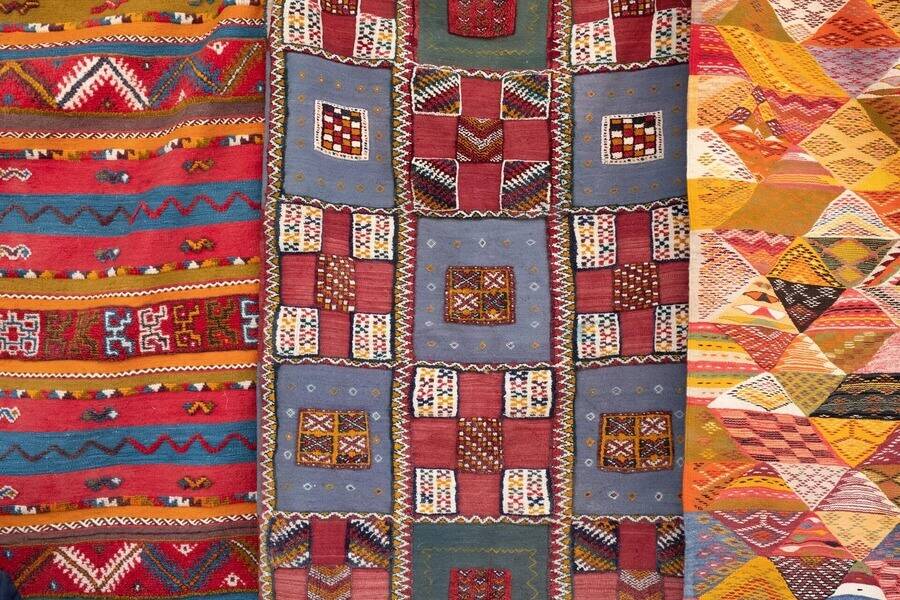
Some links below may be be affiliate links. As an Amazon Associate I earn from qualifying purchases.
Discover the rich culture and unique treasures of Morocco through its souvenirs. Explore the best Moroccan souvenirs – from the colorful, hand-made rugs of each region, to the world-famous leather goods and beautiful ceramics, Morocco has something to offer every traveler.
Whether you’re looking for comfortable clothing, intricate lanterns, natural argan oil, fresh spices, or traditional metalwork, you’re sure to find it in the bustling streets and souks of Morocco.
Take your time, bargain, and bring home a piece of Morocco’s rich history and culture.
Table of Contents
Rugs
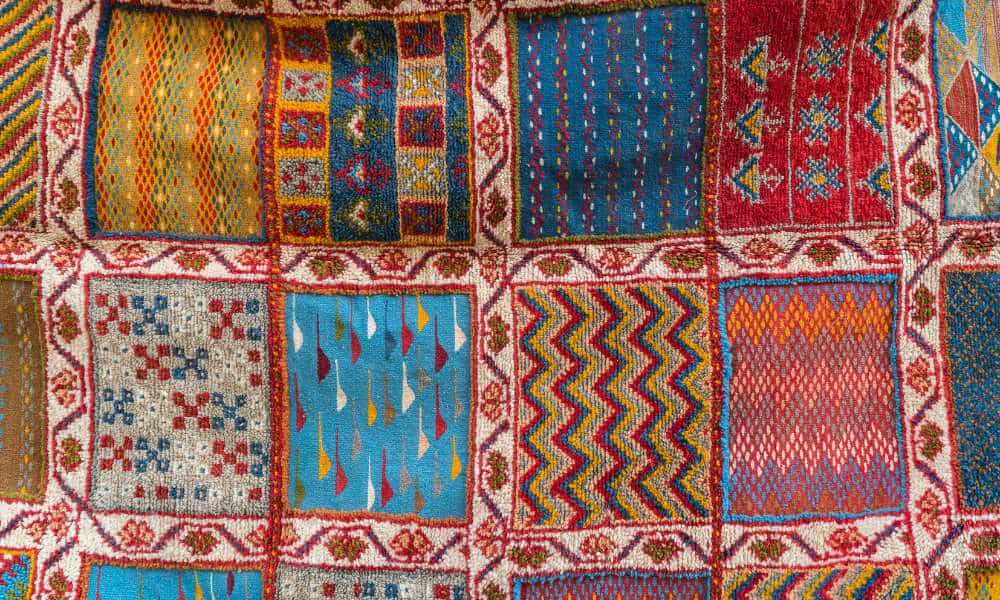
When thinking of souvenirs from Morocco, rugs come to mind – with a good reason.
Each region of the country has a unique style of handmade rug, with distinct patterns and bright color combinations.
Take your time when buying a rug, and don’t be shy about bargaining.
Even if you love a particular item, don’t show too much enthusiasm, as that may make it harder to lower the price.
You may be able to get the best prices on the rugs unique to the region you are in.
Clothes
As you wander through the streets and souks of Morocco, you’ll see a huge range of clothing types and styles.
Comfortable djelabas and gandoras for daily wear, warm hooded sweaters, intricate kaftans for weddings and holidays, scarves in every possible color and pattern.
Embroidered tunics, knit hats, and modern styles from Spain and Turkey fill shops and display windows.
You’ll have no trouble finding traditional clothes in the touristic area of any city.
Head to the newer, commercial areas for better deals on imported styles. Note that the dyes used are not always fast, so wash colored items separately the first few times.
If you happen to be in need of a good suit, you’re in luck. Morocco has many skilled tailors, and it’s possible to buy a brand new suit and have it tailored to your size for la reasonable price.
Leather Goods
Morocco is world-famous for leather and has been for hundreds of years. In fact, one of the finest types of leather, a soft, pliable form used for gloves, shoes, wallets, and bookbindings, is known as Morocco leather.
The best leather usually comes from goat skin, but sheep, cow, and camel and used as well.
Fes is the center of the tanning industry, and the circular pits in the middle of the medina are a classic symbol of both the city and the trade.
In a process that has changed little in the past 800 years, skins are cleaned, soaked, washed, and dyed.
Natural dyes, including saffron, poppy, henna, and indigo are used to give it the rainbow hues.
Throughout Fez, and for higher (but still excellent) prices in other cities, you can purchases handbags, purses, wallets, shoes, slippers, jackets, and floor cushions made from smooth, supple leather.
Lanterns
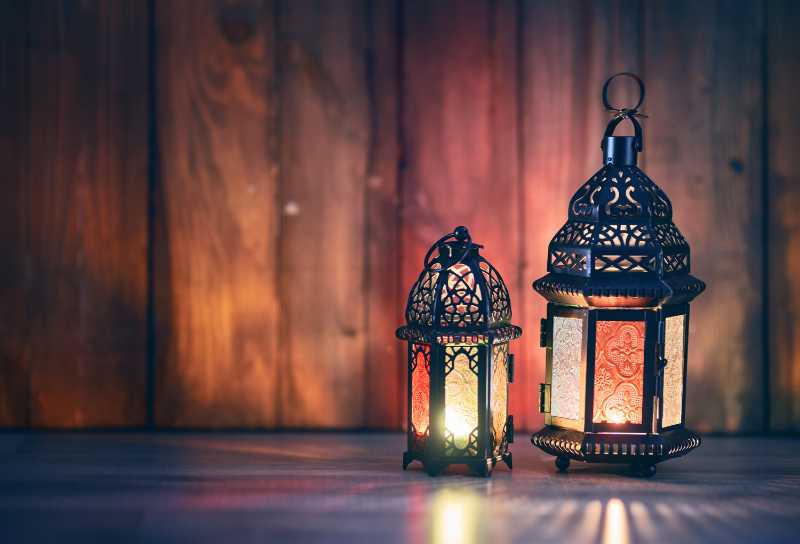
A traditional decoration in the south of Morocco, lanterns make a lovely addition to a porch, dining room, or bedroom.
The colored glass and intricate designs create lovely patterns of light that instantly make any room cozier.
Lanterns range in size from just big enough for a tea light to nearly two feet tall. They are mostly sold in the medinas and tourist areas of cities, though you may find them sold by street vendors in some cities as well.
Argan Oil
Argan Oil comes from the nut of the argan tree, a hardy desert species that grows only in Morocco. The golden-yellow oil is high in antioxidants and is a powerful moisturizer for skin, hair, and nails.
It can also be used for cooking, especially for the preparation of amlou, a sweetened almond butter made with argan oil and honey.
Culinary argan oil comes from nuts that were toasted before pressing, giving it a rich, nutty flavor. When buying, specify whether you want to use it for cooking or cosmetics.
The best place to purchase argan oil is in the south of the country, in the region of Agadir and Essaouira.
Moroccan Souvenirs Delivered to Your Doorstep:
Can’t make the trip to Morocco? No worries! Experience the vibrant culture of Morocco from the comfort of your home.
Spices
Morocco is a wonderful place to buy spices. Cumin, saffron, cinnamon, nutmeg, paprika, turmeric, star anise, black pepper, and ginger are piled precariously high in brightly-colored piles that lend a heady fragrance to the tiny shops
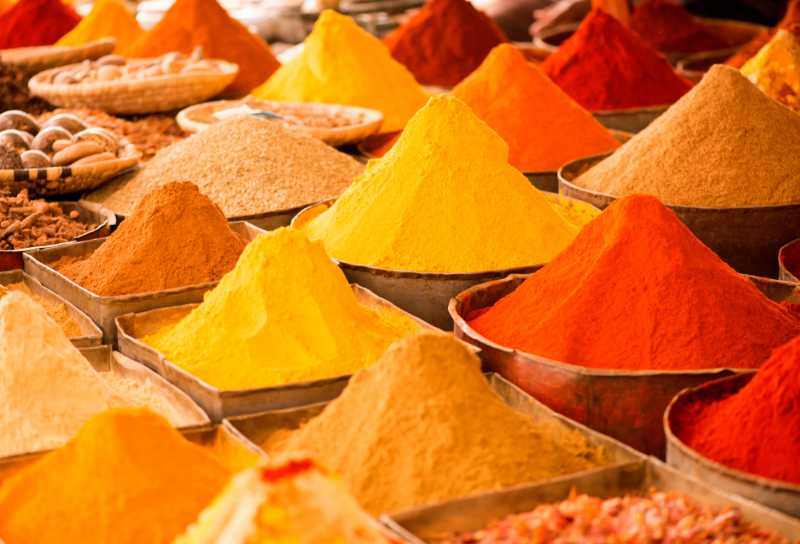
Many shops offer both whole and ground spices, and you can ensure the freshest spices by having them ground to order.
Most purveyors offer a special blend known as ras al hanout, a mix of savory spices unique to each vendor.
These stores may also sell things like dried fruit, nuts, argan oil, and natural cosmetics.
You can find high-quality spices in any city, though most of these products will be freshest and cheapest in the south.
Ceramics
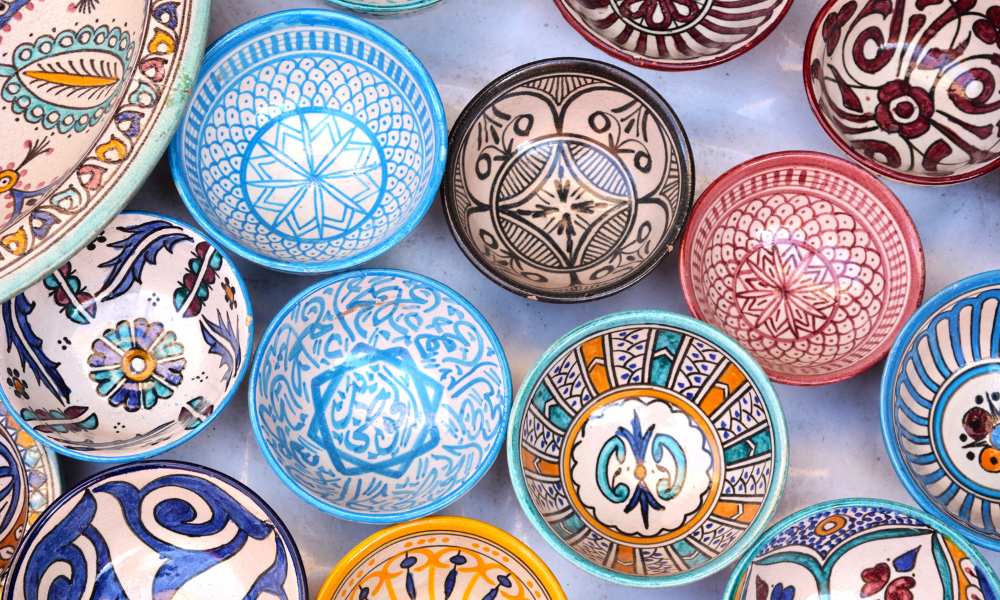
Morocco is well known for lovely, brightly-colored ceramics, including bowls, plates, couscous dishes, spices jars, and decorative pieces.
The region of Fez and Meknes is especially famous, but you can find beautiful pottery in any city.
The medina, or old city, is usually a good place to look. Safi is considered the pottery capital of Morocco.
Metalwork
In additional to beautiful ceramics, tapestries, fabrics, and leather goods, you can find decorative and functional metalwork throughout the country.
Platters, teapots, jewelry, and small sculptures of brass, copper, and silver are common items in both tourist areas and markets frequented by locals.
The highest-quality items will have hand stamped designs and etching
FAQ on Buying Souvenirs in Morocco
The best cities for shopping in Morocco vary depending on what you’re looking for. Marrakech is an excellent choice for carpets and lighting.
Fes is renowned for pottery, embroidery, and leather items. Safi and its regions are known for pottery.
Tanger offers unique items, including antiques and Rif-style hats. Essaouira and Agadir are ideal for purchasing argan oil and wooden items, as well as silver jewelry.
Casablanca and Rabat are good for both modern and traditional clothing, antiques, and artisanal products. Since these are two major cities, there are more choices and several stores and malls.
Your budget for souvenirs in Morocco can vary significantly depending on your preferences and the items you want to purchase.
Here are some approximate price ranges: Small bowls and tagines can cost as little as 20 to 100 dirhams. Leather items range from 500 dirhams for medium-sized bags to 1000 to 2500 dirhams for jackets.
Lanterns can vary from 100 to 500 dirhams for lighter ones to 300 to 2000 dirhams for metal lanterns.
Carpets can cost from a few hundred to several thousand dirhams. It also depends on where you make your purchases, whether it’s in a traditional market or a high-end store. Keep in mind that bargaining is common in Morocco, so be prepared to negotiate.
Yes, it is possible to find authentic and high-quality souvenirs in Morocco, but it requires knowledge and vigilance.
When shopping for specific items such as argan oil, pottery, or carpets, it’s best to do research and buy from reputable sellers or workshops.
Look for locally made products and ask questions about craftsmanship and authenticity.
In general, avoid shops that target only tourists, as they may charge excessive prices. With a little effort and attention, you can find authentic and high-quality souvenirs to bring back from Morocco.





